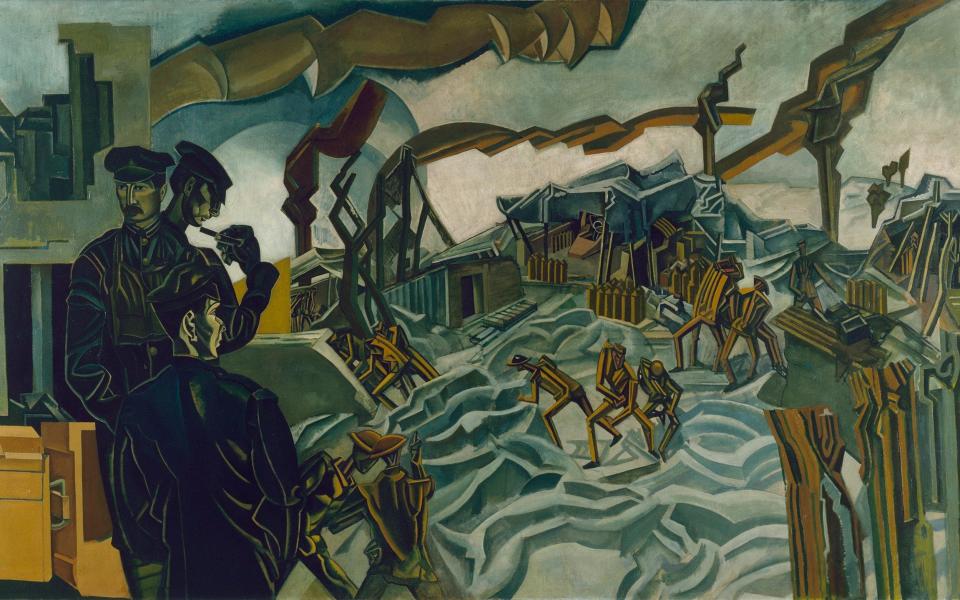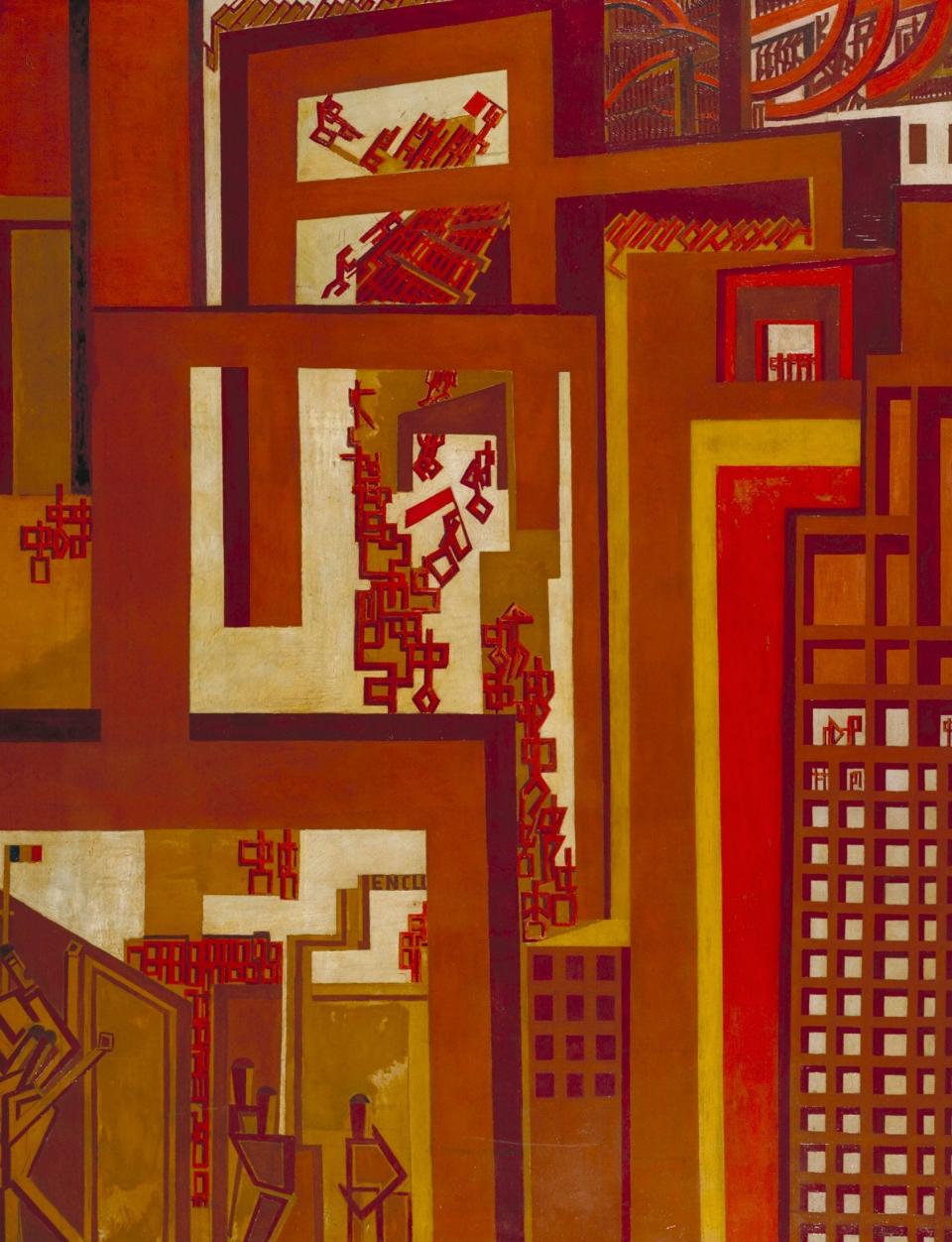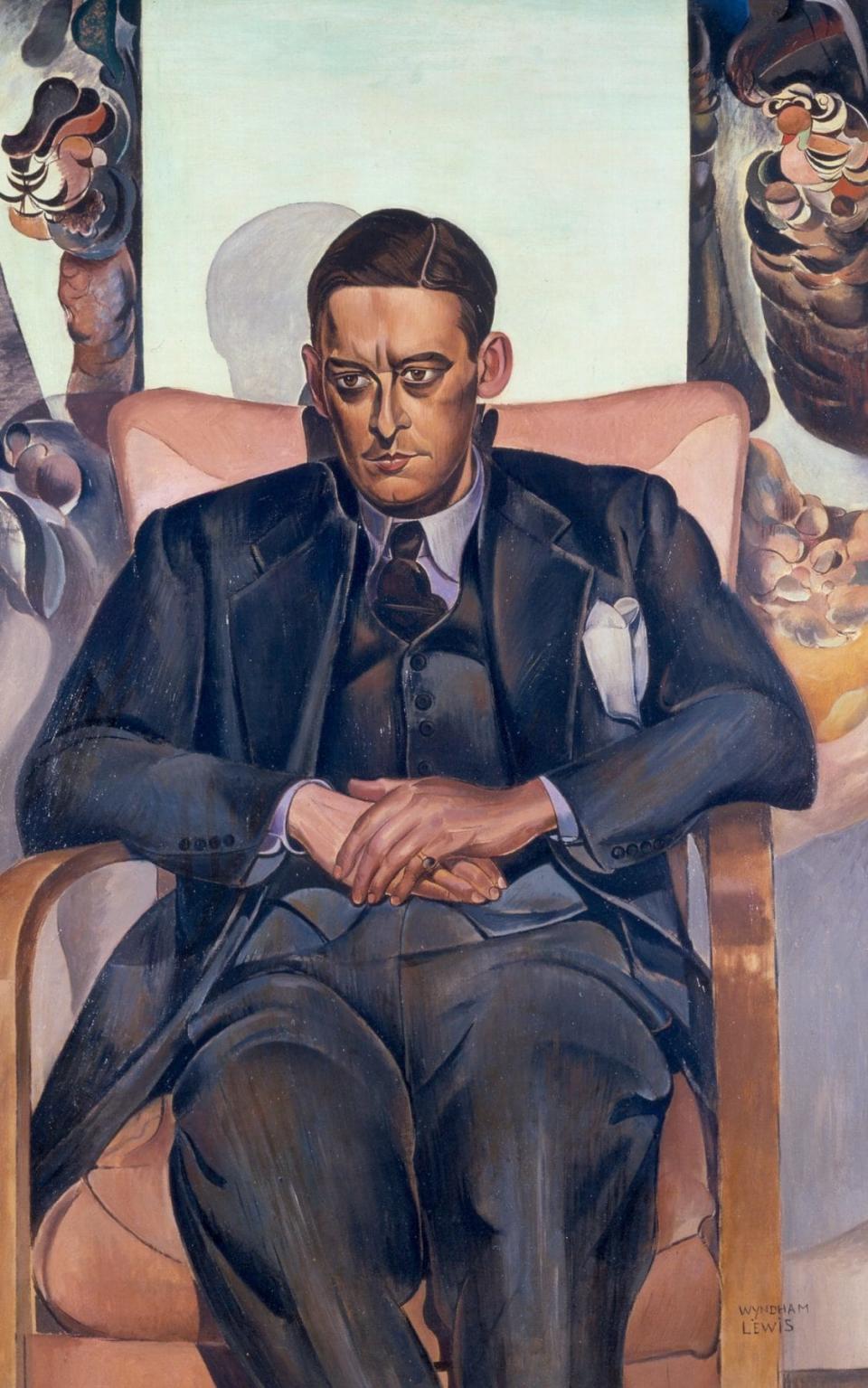Poignant display of a huge talent never quite fulfilled - Wyndham Lewis: Life, Art, War, IMW North, review

Sixty years on from his death, Percy Wyndham Lewis remains one of the most controversial British artists of the 20th century. Painter, novelist and founder of Vorticism – Britain’s first truly radical modern art movement – he alienated not only the mainstream society he despised, but most of his fellow avant gardists, through his bloody-minded megalomania and self-interest. His espousal of fascism in the Thirties ensured that he rarely figures on lists of great British artists, despite his patent originality and clear influence on subsequent generations.
Lewis’s largest British exhibition since 1956 – and our first real opportunity to assess his stature as an artist – certainly should be a major event. The fact that it is taking place in the Imperial War Museum North, rather than, say, Tate Britain, might be seen as a reflection of his still problematic status. However, the ostensible reason is Lewis’s work as an official war artist on both world wars – the former leading, the show argues, to some of the most powerful images of that conflict.

The exhibition begins in an oddly bitty fashion, with early portraits of Lewis – some by his mentor Augustus John, with whom he quarrelled – and works by fellow students at London’s Slade school, and this fragmented impression is compounded by an overloud audio-visual presentation that’s audible through most of the exhibition.
Lewis’s early attempts to absorb the influences of Picasso and Matisse were far more forceful, and less genteelly English, than those of rivals such the Bloomsbury Group’s Vanessa Bell, and are seen in powerful drawings such as At the Seaside, a satire on the British at play, with its characteristic mixture of hard-edged machine forms and “primitive”, mask-like faces.
But the show’s first really impressive work isn’t by Lewis himself, but the wonderful The Vorticists in the Café de la Tour Eifel, in which a be-hatted Lewis sits at the centre of the group he founded in 1914, in a lively canvas painted decades after the event by his sometime disciple William Roberts (with whom, again he violently quarrelled). Roberts’s quirkily cubistic style reflects Vorticism’s aim of celebrating the dynamism of the mechanised world. But the inclusion of works by him and other Vorticists, such as Edward Wadsworth and David Bomberg, and displays of works by Lewis’s other associates throughout the exhibition, dilutes the impact of Lewis’s own work.

Lewis’s major Vorticist painting, The Crowd (1914-15) is a quintessential modernist city-scape, at once euphoric and slightly nightmarish, with asymmetric grid-forms offset by busier cell-like structures, all in rich oranges and yellows. If this large and audacious painting can hold its own beside anything produced at the time in the great modern-art capital, Paris, Lewis was prevented from developing this near-abstract direction by the outbreak of the First World War, in which he served as an artillery officer and later as an official war artist.
The 10-ft-wide A Battery Shelled is another tour de force, with its monumental arrangement of impassive, pipe-smoking artillerymen set beside a battlescape in which cubistic soldiers – part-insect, part-robot – scurry in unfathomable patterns over a jagged landscape. The painting’s moral ambivalence as much as its radical appearance – its lack of obvious empathy with the muscular but dehumanised soldiers – provoked widespread hostility when it was first exhibited in 1919.
Lewis’s first major work after the war, the large A Reading of Ovid, features two red-faced and diabolically smiling figures, a type Lewis referred to as “tyros”, representing what he saw as the “listlessness and triviality” of the post-war era. As a piece of fierce, home-grown surrealism, the work is like nothing else in British – or any other – art. Yet this proved yet another powerful, but undeveloped trajectory, as Lewis was forced to focus on portraiture simply to survive.

While he produced a number of very dull images of industrialists and other worthies, the show provides a fair selection of his more interesting portraits in which he fuses classic British elegance with cubist elements: Edith Sitwell’s gaunt features captured in vigorous looping lines; a saturnine TS Eliot, which caused controversy because of a phallic form allegedly hidden in the background (trust me, you won’t find it).
Yet there’s an unmistakable sense of an artist going off the boil and a promise that will never be fulfilled. Historical paintings inspired by the conquest of the Americas are slight and whimsical by the standard of his early works, while Inferno (1937), presented as a late magnum opus, with its wailing souls of the damned, lacks the incisive, muscular quality that typifies Lewis at his best.
This is far from being the definitive Lewis show, with too many significant omissions, such as his dream-like portrait of Ezra Pound or the marvellous study in red of his wife Froella from the National Portrait Gallery (represented here by a lesser variant). We do however get a poignant sense of his ultimately pitiful trajectory: ending his life a sorry figure, grateful for the attention of the establishment he had once excoriated. If Lewis can be accused of many things – from fascism to betraying his friends – the most unforgivable, certainly in terms of artistic reputation, was his failure to live up to his formidable talent.
June 23 until Jan 1; 0161 836 4000; iwm.org.uk


